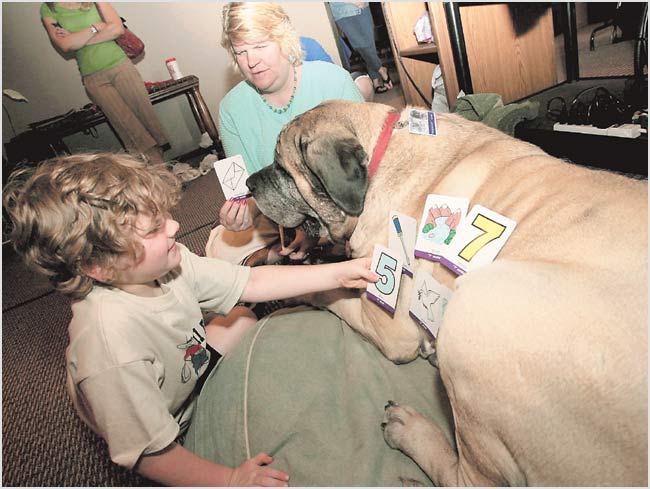 Since ancient Greece, animals have been used to improve the emotional and physical well-being of humans, particularly the mentally challenged, psychologically impaired, elderly and physically handicapped. There is substantial research in these populations to support the effectiveness of Animal-Assisted Therapy (AAT). More recent studies and anecdotal field evidence suggest that AAT can be an innovative and very effectual tool for speech language therapy as well. Investigations reveal that using animals in a very pre-planned, individualized and goal oriented way can reduce anxiety, improve focus, build confidence and increase spontaneous communicative initiations during SLP therapy sessions.
Since ancient Greece, animals have been used to improve the emotional and physical well-being of humans, particularly the mentally challenged, psychologically impaired, elderly and physically handicapped. There is substantial research in these populations to support the effectiveness of Animal-Assisted Therapy (AAT). More recent studies and anecdotal field evidence suggest that AAT can be an innovative and very effectual tool for speech language therapy as well. Investigations reveal that using animals in a very pre-planned, individualized and goal oriented way can reduce anxiety, improve focus, build confidence and increase spontaneous communicative initiations during SLP therapy sessions.
Therapy animals are not to be confused with service animals. While both must undergo extensive training, a service animal is trained to perform specific tasks for the benefit of his handler – someone with a disability. Therapy animals, on the other hand, are trained to service the health needs of people other than their handler, and to improve the overall therapy experience. Birds, rabbits, potbellied pigs, fish, cats and horses have all been utilized as therapy animals. However, dogs are consistently used more often and in more settings, due to their trainability, temperament and ability to communicate unconditional acceptance through tail wags, facial expressions and barks. This unconditional acceptance is especially critical in dealing with language/speech impaired populations.
Could your kind and gentle pet also make a good therapy animal? Pet Partners (formerly Delta Society), an organization promoting the benefits of the animal-human bond, defines AAT as “ A goal directed intervention in which an animal that meets a specific criteria is an integral part of the treatment process.” Here are some basic criteria that “both ends of the leash” must meet before using AAT in a therapeutic setting:
- Successful completion of basic, intermediate and special performance obedience/dog training and pet therapy classes. (see Pet Partners for classes in your state)
- Passing testing and formal certification through an authorized pet therapy organization such as Pet Partners. Certifications must be current.
- Successful completion of a one year supervised pet therapy internship.
- Animal is at least 1 year old and has lived with you for at least 12 months.
- Dogs must be up to date on all vaccination and rabies shots and have a veterinarian certified form attesting to their good health.
- Animals must always be well-groomed: bathed, nails clipped, coat and teeth brushed, etc.
Obviously the investment in training and certification is not for everyone or every pet. It is also clear that more evidence-based research is needed to evaluate AAT’s effectiveness, before it becomes widely accepted in the field. Is AAT only useful for individualized treatment plans or can it be used in group settings? What types of disorders are best served by this method? Does the type of animal used affect therapeutic outcomes? These and other questions remain. However, there is enough to suggest that more practitioners should consider incorporating AAT into their SLP toolbox.
If you are a Speech Language Pathologist looking to change your work environment, contact the Centra Team at 800 535 0076 and let us find you your next opportunity for personal growth and satisfaction.